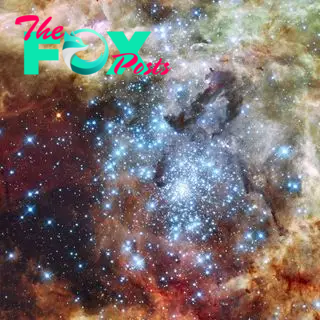Science
Scientists find one of the oldest stars in the universe in a galaxy right next to ours
Scientists have identified one of the oldest known stars outside the Milky Way. The discovery, reported in March in the journal Nature Astronomy, has uncovered a relic from the early days of the universe in the Large Magellanic Cloud (LMC), a satellite galaxy of the Milky Way — and it's revealing the conditions from a time before the sun even existed.
The first stars born after the Big Bang lived and died billions of years ago, so there are none left to tell the story of the early universe. But traces of these stellar ancestors were preserved in the second generation of stars that formed and still survive today.
The outer layers of these ancient stars "preserve the chemical composition of their natal gas cloud," and therefore reveal the composition of the first generation of stars that seeded those clouds with new chemicals, study lead author Anirudh Chiti, an astrophysicist at the University of Chicago, told Live Science in an email. The composition of these stars offers a window into the early production of elements when the stars formed billions of years ago, Chiti said.
Hunting stellar relics
The earliest stars blazed to life billions of years ago, soon after the Big Bang. They were behemoths made from the only elements that existed in abundance at the time: about three-fourths hydrogen and one-fourth helium. Those giants quickly burned through their nuclear fuel, shedding their outer layers and then exploding as supernovas and polluting their stellar neighborhood with new, heavier elements forged within their cores.
This stellar ash entered the mix when a second generation of stars was born from the gas clouds enriched by the first. This cycle continued, building ever-heavier elements and even seeding the cosmos with the building blocks for life. This is the source of the oxygen we breathe, the calcium in our bones, and the iron in our blood cells.
Related: Astronomers find remnants of the oldest stars in the universe

By measuring the amounts of these elements in a star, astronomers can estimate its age. The less "ash" that has accumulated, the older the star must be, while younger stars have built up a lot of elements from many earlier generations.
-

 Science3d ago
Science3d agoInside Capitol Hill’s Latest UFO Hearings
-

 Science3d ago
Science3d agoYou Won’t Want to Miss the Leonid Meteor Shower. Here’s How and When You Can See It
-

 Science4d ago
Science4d agoHere’s What Trump’s Win Means for NASA
-

 Science1w ago
Science1w agoWhy Risky Wildfire Zones Have Been Increasing Around the World
-

 Science1w ago
Science1w agoIt’s Time to Redefine What a Megafire Is in the Climate Change Era
-

 Science1w ago
Science1w ago4 Astronauts Return to Earth After Being Delayed by Boeing’s Capsule Trouble and Hurricane Milton
-

 Science1w ago
Science1w agoThe Elegance and Awkwardness of NASA’s New Moon Suit, Designed by Axiom and Prada
-

 Science2w ago
Science2w agoSpaceX Launches Its Mega Starship Rocket. This Time, Mechanical Arms Catch It at Landing



























